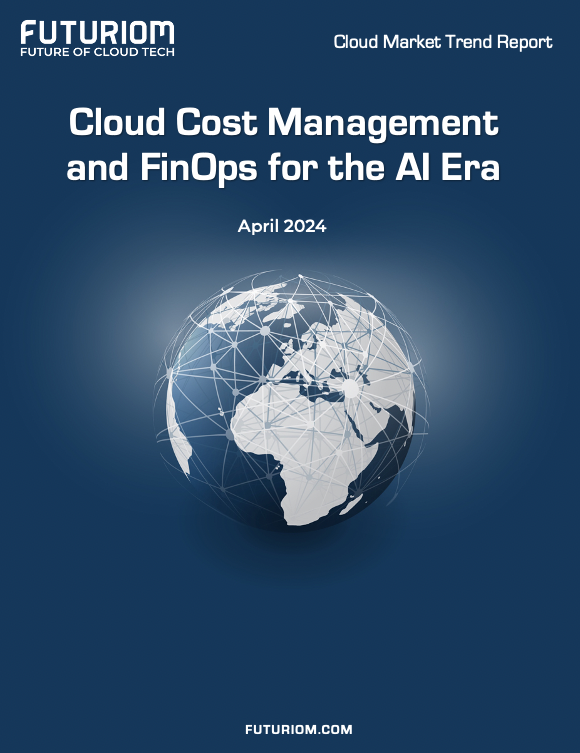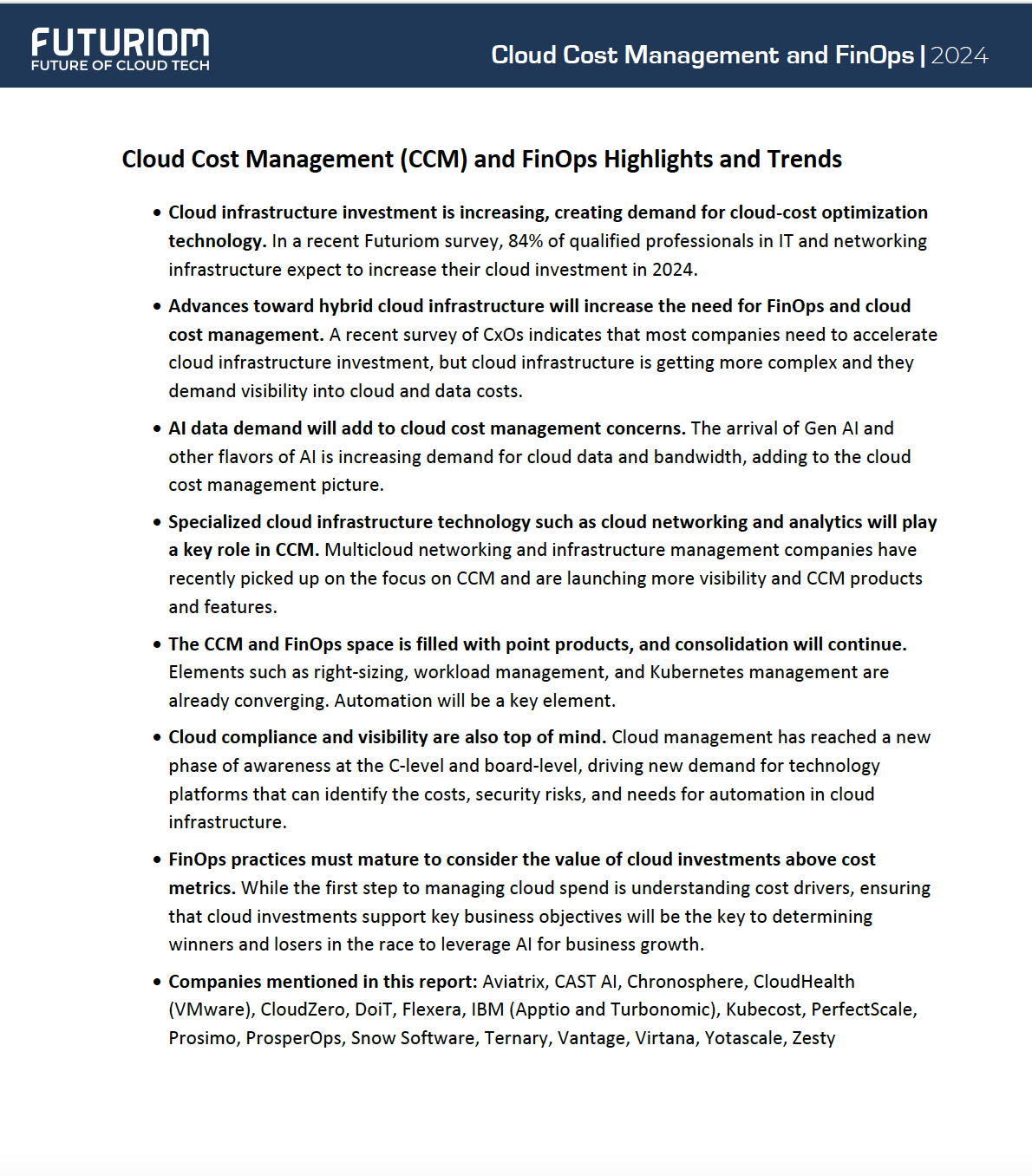Cloud Cost Management and FInOps for the AI Era

There’s a big shift going on in the cloud infrastructure market. After years of huge growth at the major platform-as-a-service (PaaS) cloud providers, growth is slowing. At the same time, the dialogue about cloud cost management (CCM) is increasing, based on news reports, surveys, and our discussions with practitioners.
The primary challenge in CCM and FinOps is complexity. It turns out that cloud services are neither cheap nor simple; in fact, in many cases they turn out to be expensive and complex. Not only are there many platforms (AWS, Microsoft Azure, Google Cloud, and IBM Cloud, just to name a few), but the areas that need to be managed are also numerous (showback and chargeback; Reserve Instances and commitment management; workload management; Kubernetes right-sizing; storage management; networking costs, etc.). As practitioners increasingly look at hybrid cloud architectures, they are also examining how they can consolidate cloud spend, whether that’s by implementing better cloud visibility and automation tools or consolidating platform functions to automate service and data consumption.
In our second year of this report, we investigated the major considerations that enterprises decide on when crafting their cloud adoption strategies. We also looked at the macro drivers of cloud cost complexity and how to establish a FinOps governance model to help enlist stakeholders across business groups, tech teams, and the finance department to address cloud cost growth holistically. If you are new to the FinOps world, we invite you to download and read this report as a primer on how FinOps is evolving to meet new challenges.
AI Drives the Conversation Forward
Meanwhile, just as cloud costs are mounting concerns in the boardroom and the offices of CxOs, a new trend came to the technology world: AI. The explosion of interest in generative AI (Gen AI) will also serve to accelerate the discussion about cloud costs, because AI drives increased data and cloud consumption.
As generative AI-fueled innovation moves from evaluation and proof-of-concept stages seen in 2023 to production in 2024 and beyond, enterprises must now take a much closer look at the costs of running public cloud infrastructure while comparing it to alternatives, such as on-premises and hybrid cloud architectures.
In the past year, interest in Gen AI and all the possibilities it holds has changed the business environment remarkably. AI-assisted co-pilots promise to profoundly automate manual tasks across all facets of an enterprise. The potential to connect previously disparate internal IT systems and set co-pilots to answer questions in milliseconds will dramatically alter job roles in HR, marketing, legal, finance, and procurement—and those are just the so-called “back office” use cases. AI will also revolutionize critical “front of house” activities, including customer interactions, product management, and new product development.
Moving Toward CCM 2.0: Integration and Automation
To facilitate CCM, operators want a near-real-time read on cost of operations so that engineering teams can make cost optimization decisions before excess usage occurs. In an ideal world, they would also get tools that can be programmed for automated responses.
We aren’t yet in a world of automated CCM, but we are moving in this direction. Some vendors have suggested to us that we are moving toward “CCM 2.0.” The first generation of vendors focused on gathering data and presenting more granular insights into cloud cost management. The next generation of CCM vendors, as well as new products from the first wave, are going to focus on surfacing actionable insights from cost and analytics data, or more importantly, on driving automation that mitigates cloud costs in real time.
The CCM market is also fragmented and filled with a large varieties of features and functionality, as you will see in the landscape outlined in our description of the marketplace (see section 3). This is leading to consolidation, as providers combine to move toward a platform that can offer a large collection of functionalities. As you will read in the report, many vendors have already combined or merged, and once a technology provider has one category they are looking to move into the next one.
The need to understand this new vector of cloud complexity in CCM and how many of the different features and functions will be integrated over time, is the reason we are further developing this landscape and coverage. Throughout these pages we’ll explore the reasons why cloud complexity has become an untamed beast in many, if not most, companies today, and why new AI requirements will accelerate this complexity, not help reduce it. We’ll then dive into remedies that companies have at their disposal to first rein in cloud costs and the emerging mandate to make business and engineering decisions based on cloud economics. We’ll also profile leading CCM solution providers, highlighting their approach to helping their customers to optimize existing cloud spend and make smarter decisions about future cloud initiatives.
We cover all these trends, and more, in this year's CCM and FinOps report.
Go ahead and download the report now!







